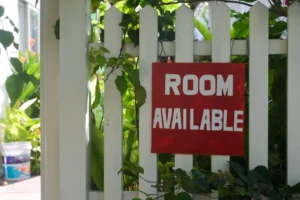Carefully evaluate both the benefits and the drawbacks

The Hidden Pros and Cons of Month-to-Month Rentals
What should you do when a very qualified applicant wants to rent your vacant property on a month-to-month basis? Should you turn them away because they do not want or cannot commit to a longer term lease?
A month-to-month lease can be an appealing and profitable way to rent out property. But, while short-term arrangements may generate more income, they often require additional effort, increase turnover costs, and create uncertainty around vacancies.
If you are considering this option, it is important to carefully evaluate both the benefits and the drawbacks.
Balancing Stability and Profit as a Landlord
Like many small businesses, maximizing landlord profits often comes down to tough decisions. One common question is whether to prioritize a stable and predictable income stream or pursue a strategy that could bring higher returns but comes with greater risk.
For independent landlords, the stakes are high. A wrong move can cut into your rental income and long-term success. Nearly 46 percent of all real estate and rental businesses fail within the first five years. Without careful planning, your rental business could face the same challenges.
One key decision that often highlights the balance between stability and profit is whether to allow tenants to rent on a month-to-month basis. On one hand, this type of residential lease agreement can potentially boost returns. On the other hand, it can bring extra work and open the door to costly vacancies.
Like any important business choice, it pays to do your homework. Just as you would run a thorough tenant screening with a trusted service like AAOA before signing a lease, you should also review your own financial goals and the conditions in your local rental market before deciding if short-term rentals are the right fit.
This guide covers everything you need to know about month-to-month leases, including what they are, when to consider them, their advantages and disadvantages, and how tenant screening can help you minimize risks.
What is a Month-to-Month Rental Agreement and How Does it Work?
At first glance, a lease and a rental agreement may seem like the same thing. In practice, they both set the rules for a rental property, but the terms often refer to contracts of different lengths.
A lease generally describes a long-term rental contract, usually six or twelve months. A rental agreement, on the other hand, often refers to a short-term contract such as a month-to-month arrangement.
Most lease agreements outline key details, such as
- Length: A month-to-month rental agreement typically covers a 30-day period.
- Automatic renewal: Usually renews automatically unless either the landlord or the tenant provides notice to end it.
- Notice: Month-to-month agreements often require 30 days’ notice, though exact requirements may vary by local law.
- Rent collection: How and when rent is collected.
- Late fees or penalties.
- Smoking and pet policies.
- Limits on guest stays.
- Landlord access: Rules about when a landlord can enter the property.
When Should You Consider Using a Month-to-Month Rental Agreement?
A month-to-month rental agreement can provide flexibility for both landlords and tenants in several situations. One of the most common is when a long-term lease ends.
Some leases automatically shift to a month-to-month arrangement if the tenant does not sign a new lease but remains in the property. For example, this could happen if a tenant is waiting for a home purchase to close.
The original lease usually outlines how the month-to-month agreement will work, such as whether rent will increase after the fixed term expires. Keep in mind that local laws may influence the terms of these agreements.
Other common uses for month-to-month rentals include offering property as a vacation rental, renting to college students in university towns, or adjusting rent more easily in areas where market values are rising.
Need a Lease Agreement?
Access 150+ state-specific legal landlord forms, including a lease.
Possible Advantages of Month-to-Month Rental Agreements
One of the biggest advantages of month-to-month rental agreements is the potential for higher earnings. Landlords often charge more for this type of lease since it offers tenants flexibility while also creating added risk and more work for the landlord.
The additional rent can help offset the uncertainty of shorter commitments, but the actual amount varies widely depending on the property and the local market. Checking comparable rentals in your area can give you a better sense of what is reasonable to charge.
Flexibility is another appealing aspect of month-to-month arrangements. Without being tied to a long-term lease, landlords can make changes to rental terms with proper notice or decide to use the property differently if needed.
This setup also makes it easier to adjust rent in competitive markets where prices are climbing, or to take back possession of the property quickly if you plan to move in yourself or use the unit for another purpose.
Month-to-month leases can also make it easier to address problem tenants. Even with thorough screening, sometimes renters turn out to be a disappointment. They may pay late, ignore rules, or cause conflicts.
With a traditional lease, removing a tenant can be complicated. A month-to-month agreement gives landlords the option to end the lease at the close of a term, which provides a smoother exit strategy. It also allows landlords to test new tenants before offering them a longer commitment.
Of course, risks remain even with short-term rentals. To help protect your property, it is wise to use tenant screening tools that check
- Financial history,
- Employment,
- Past housing records,
- Criminal background.
Even if someone only stays for a few weeks, they still have the potential to cause damage or financial loss.
Potential Disadvantages of a Month-to-Month Rental Agreement
One of the biggest drawbacks of month-to-month rentals is the added workload and expense of frequent turnover. Each time a tenant leaves, landlords may face costs for cleaning, maintenance, marketing, and preparing the unit for the next resident.
Replacing tenants also takes time, from answering inquiries and showing the property to screening applicants and signing new agreements. For landlords who manage their properties without outside help, these responsibilities can quickly become overwhelming.
Another challenge is the risk of lost income. Unlike a year-long lease that locks in steady payments, month-to-month agreements always carry the possibility of vacancy with little notice. An empty unit means covering the mortgage, taxes, and other expenses without rental income to offset them. In areas with slower demand or highly seasonal markets, landlords may struggle to find new tenants quickly enough to keep cash flow consistent.
Uncertainty is also a key concern with short-term rentals. With only 30 days of guaranteed occupancy at a time, landlords are never far from the possibility of an empty property. This constant need to focus on finding tenants and managing transitions can make it harder to plan for the long term. Additionally, with more people cycling through the property, the likelihood of damage or unexpected issues increases, even when thorough screening is done.
Confront the Challenges of Month-to-Month Rentals with Tenant Screening
Short-term rentals mean more turnover and more tenants moving through your property, which makes thorough screening essential. With AAOA, landlords can run fast and affordable online tenant checks to reduce risk.
Even short-term residents can cause serious damage. A criminal background check searches millions of state and federal records for potential matches. An identity check confirms applicants are who they claim to be. A credit report and Income Insights help you verify that tenants have the means to pay rent, even if they only stay a few months.
The Bottom Line
Month-to-month agreements provide flexibility for both landlords and tenants, but they also carry risks. Weigh the possibility of higher income against the likelihood of increased workload and vacancy before making your decision.
How AAOA Can Help
If you need assistance with tenant screening or have questions about the rental process, consider reaching out to professionals who specialize in this area. AAOA offers a variety of services, including insurance, rent reporting, rent collection and financing.
Contact us today to learn more.
Disclaimer: All content provided here-in is subject to AAOA’s Terms of Use. Nothing contained on this website constitutes tax, legal, insurance or investment advice, nor does it constitute a solicitation or an offer to buy or sell any security or other financial instrument. AAOA recommends you consult with a financial advisor, tax specialist, attorney or other specialist who is able to properly advise you.













 Accessibility
Accessibility